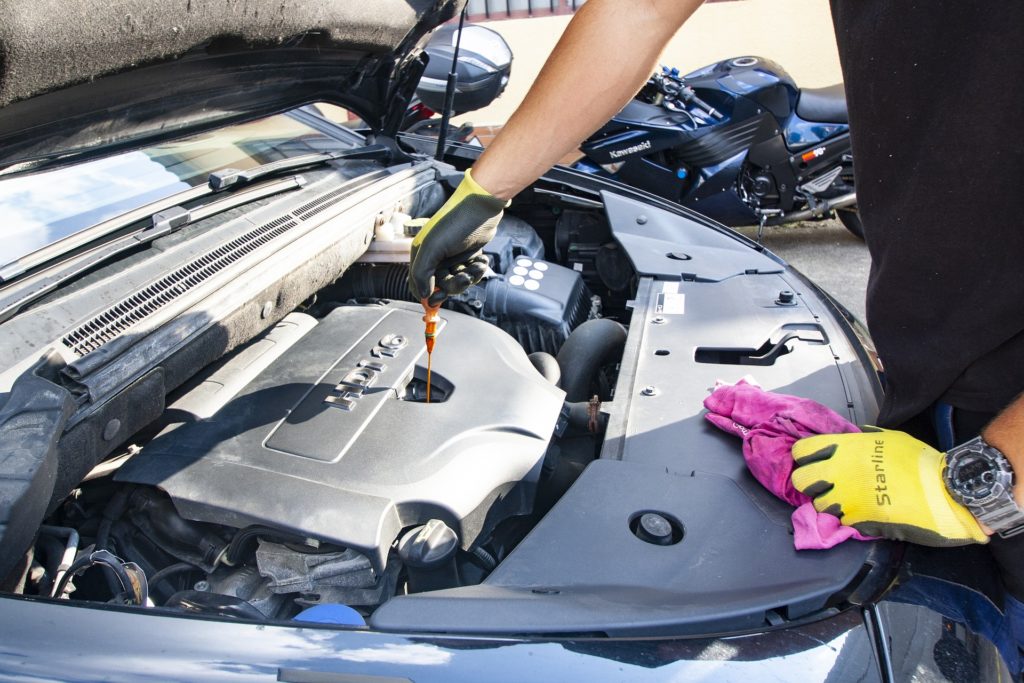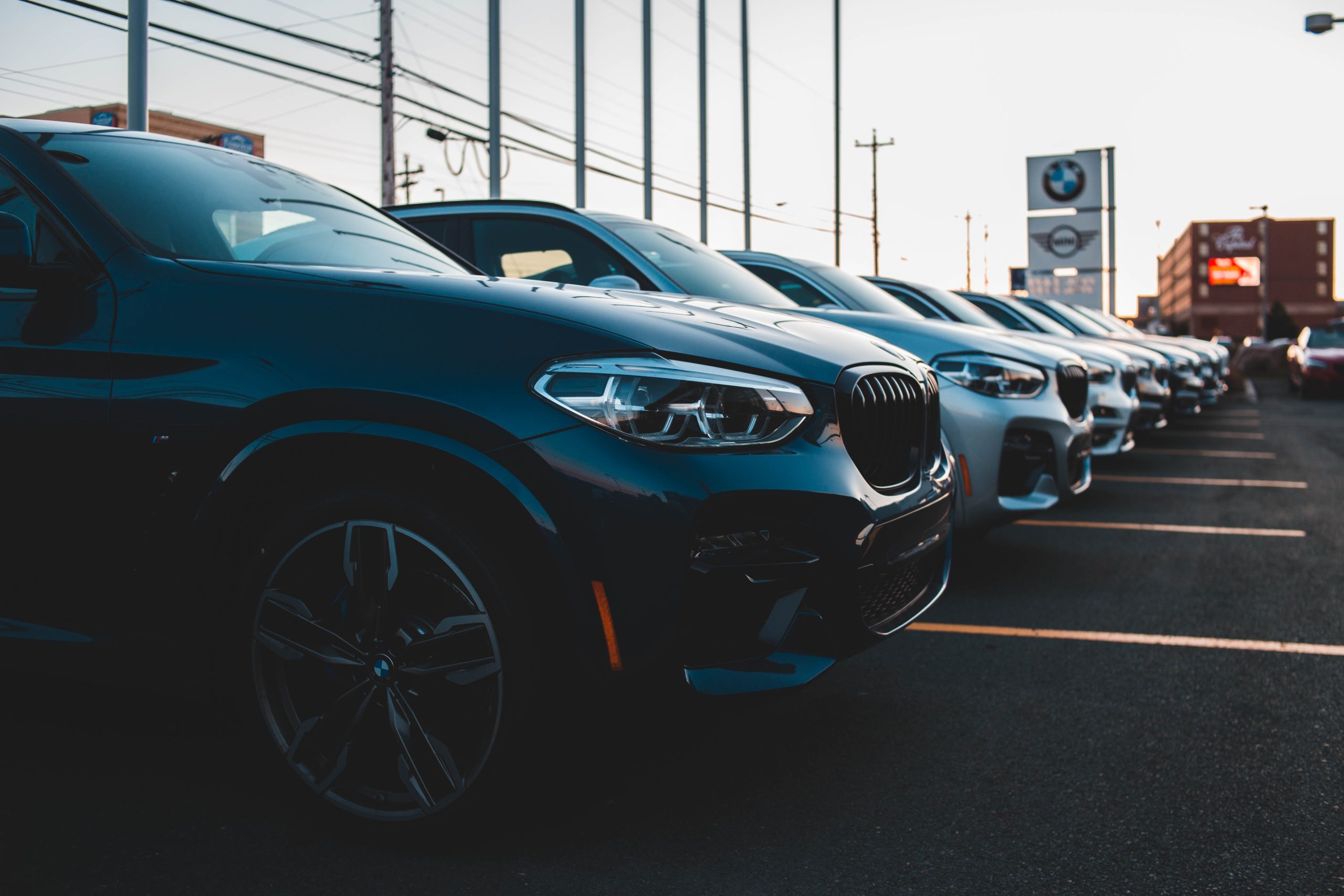To start off this guide of car buying tips, let me tell you a secret: Dr. Thia and I could not be more different when it comes to buying cars. Dr. Thia LOVES car shopping, and I on the other hand loathe it. Dr. Thia is fueled by the process and having the opportunity to negotiate, while I find it frustrating and tiring. I think a car should cost what a car should cost, etc.
Dr. Thia and I both recently purchased new to us cars. We enjoyed talking about our experiences simultaneously. Based on us talking about our experiences, I put together this guide of car buying tips.
Use this guide during the car buying process to arm yourself with proper information to ensure you are getting a good price on the car you are purchasing, a good trade-in value, and are thinking holistically about the car you are purchasing.
Know Your Trade In
If you are trading in a car to purchase another one, there are a few pieces of information to arm yourself with:
- it’s value
Before you step foot into any dealer, know the ballpark figure of your trade-in value. There are a few steps to doing this.
First, Kelly Blue Book has been the golden standard for car trade-ins for a long time. You can enter in your car’s information, mileage, etc. and get a value range for the value of your car. Be careful to be realistic about the state of your car (i.e. if the dealership pulls the CARFAX report and is going to see three accidents, your car is likely not in the very good condition standard); however, don’t minimize it either (i.e. if you’ve done the maintenance work, never allowed the car to be smoked in, never been in an accident, etc., the car is likely not in poor condition).
Second, one small good of the pandemic is that you now can request trade-in offers for a used car online, from the comfort of your home. Dr. Thia used CarMax’s online trade-in offer feature to get a trade-in price for her car. Because of the demand for used cars, this value was higher than the KBB price on her car, and was a great leveraging tool for her. It was free and took less than five minutes to get, but likely increased her trade-in value several hundred dollars, if not more. Those dollars count big time!
Dr. Thia likes to make it easy for dealerships to understand her expectations. She prints out the materials from KBB, etc., and has them laying on the passenger seat with dealerships review her trade-in. She also makes sure the sales people she works with understand her expectations with respect to her trade-in value.
- any current loan amount
Knowing the loan amount on your current car is critical so that you understand the equity you have in the car you are trading off. If you are upside down in the loan (i.e. the car is worth less than the amount owed on the loan), know that you’ll have to come up with dollars to pay off your current car. Also, knowing the equity you have can help you determine dollars toward your new to you vehicle.
- the current insurance and maintenance costs
The last thing to really think about with respect to your trade-in is the current insurance and maintenance costs on the car. Take a minute to think about what it costs to fill up the car, what it costs to have the oil changed and tires rotated, and what the insurance cost on the car is. When looking at a new car, it’s important to know what you are currently paying so that you can ensure you are comfortable with what the new will be and how it will impact your spending.
Know What Your Needs Are for the Car
Some of us get into a space where we have our car and it fits our needs, but it is simply not reliable any more or there are some features in newer cars that would make us feel safer (if you’ve never had a car with autonomous braking, I highly recommend it as a safety feature on your next car). In these situations, it can be pretty easy to think about what your needs are for a car.
When we were expecting our first child, we decided to go car shopping. We went and test drove five similar cars, all different brands. We thought we found the perfect car. Six months later we had our daughter and we found out rather quickly that the car didn’t have quite the space we needed. One stroller in the trunk and it was FULL. There was no room for a diaper bag, a lunch box, or an overnight bag if we decided to do an overnight driving trip.

I highly recommend if you are expecting a big life change (i.e. adding on to your family, moving to a different location, etc.), really thinking about your long-term needs for the car and thinking it through. When we bought that car, I told Mark he was driving it for the next ten years. He only drove it for two years because it didn’t fit our needs.
Know Your Deal Breakers
Purchasing a car is a negotiation from start to finish. There are things we can flex on, and there are things that make it a deal breaker. Know what your deal breakers are, which are likely related to the needs you have for purchasing the car in the first place.
If you haven’t heard, there is currently a huge chip shortage, and dealers are not able to keep up with demand for new cars. This means that inventory is low. When we were recently buying a car, we were looking for a vehicle with a three person bench in the middle row, and not two captains chairs.
Most people prefer captains chairs with kids because it’s easier to get to the back row without having to remove car seats. For us this was a deal breaker. There are a number of times we are going to need that middle bench seat. It didn’t make sense to us to buy a larger vehicle with a third row and still need to rent a car because we needed that seat in the middle. So, instead of flexing on the second row bench, we had to look at cars that weren’t new. It was a tradeoff, but we ended up with a car we feel will meet our needs for a long time.
Research The Car You are Looking For – Both New And Used
You can either buy new or used, and my guess is that most of us have our preference of either buying new or newer used. There is something about a new car smell, but it’s also the fact that depreciation is at its highest when driving a new car off the lot.
So, no matter your personal preference, researching both options and comparing the benefits of each at a minimum will provide you with facts that can be helpful. I have personally bought new when it made the most sense and used when that made the most sense.
- Price
Before stepping onto a lot, take time to research the car(s) you’re interested in and know the general prices of the car. While there is always room for negotiation, it’s better to have sticker shock (have you seen the price of cars!?) at home. It’s easier to be more clear about what you want without the added pressure of a salesman in your face trying to get you to look at cars outside of the price range you are comfortable with.
Take a look at the price of new, one year old, two year old, and three year old vehicles like you are shopping for. It may be worthwhile to pay the new car cost, if a one or two year old vehicle isn’t discounted much to the price of the new; however, if you’re looking at a car and see it depreciates in value quickly, perhaps a newer used vehicle may be worth a second look.
- Warranty
Car warranties vary significantly. They vary from new to used, and they vary by car manufacturer. When shopping for cars consider the warranty that comes with the vehicle you are looking to buy. While we all hope we are buying cars we can drive forever, the reality is that warranties are important and having a longer warranty has value.
An old colleague of mine talked with me about a car buying experience where they ended up buying something they really hadn’t anticipated. They were looking to buy a small-size SUV in a specific brand of car. They had test driven the car, but found that some of the features they wanted (like keyless entry and safety features) were only available in the highest trim package. Having to buy the higher end trim package, made the car feel more expensive to them.
They then looked at the sister company that was considered luxury. They found that the lowest level trim package for the same size of vehicle had the key features they were looking for and actually cost less than the car they originally test drove. They ended up buying the luxury car and were pleased with their choice.
- Features
I may be dating myself a bit, but I remember when my dad purchased a truck that had a six CD changer. That felt super high tech. I’m not sure cars today even have CD players in them. Today there are features like lane assist, autonomous braking (the car breaks for you to avoid an accident), adaptive cruise control, heads up displays, 360 cameras, parking assist, rain sensing wipers. I’m sure there are even more features than that.
In some ways it’s a little overwhelming all of the features a car can have. Take time to research and understand what features cars have and how they work, and know what is important to you. If you never drive on the highway, or very rarely do, perhaps adaptive cruise control is a feature that isn’t of interest to you. After driving a car with autonomous braking, I will attest that I will never buy a car without the feature.
Other Car Expenses to Think About
There are a lot of costs associated with buying a car that are important to think about besides the trade-in value of your car, if you have one, and the cost of the new car. Here are a few expenses to consider:
- Pull a Vehicle History Report
If buying a used car I highly recommend buying a vehicle history report (the two leading names are Carfax and AutoCheck). By spending $30 or so, you can know a lot of additional information about a car (maintenance history, accidents, warranty claims, etc.). For a little bit of money it can help you feel more confident you are buying a car with a reasonably clean record.
- Insurance Costs
Before buying a car, tell the dealer you’re interested (some are currently requiring deposits to hold a vehicle because demand is so high), and check in with your insurance agent. Get pricing detail and compare it with your current insurance costs to ensure you are comfortable with any increase in cost that might occur.
- Maintenance Costs
Maintenance costs are not created equal. Some cars have very expensive maintenance costs, or require premium gas at the gas station, increasing the cost of owning the vehicle.

I once had a client who drove a vehicle that had maintenance costs that rotated between $500 and $1,000 each time they got an oil change. They didn’t realize the maintenance costs would be so expensive. It was clear those payments were a stressor on their spending plan. When they made a change to a new car they did research on oil change costs and found a vehicle that cost between $50 and $75 for maintenance which was much easier on their spending plan.
- Extended Warranties
When you go to buy a car there will, with almost certainty, be a sales pitch about an extended warranty. So, have a plan prior to walking into a dealership and stick to it. The research clearly says that extended warranties are expensive, have a high variability with respect to what they cover, and consumers rarely use them (i.e. they trade off the car before things go wrong, etc.). Don’t get caught off guard that the conversation is coming and be prepared with any questions and your answer to the sales pitch.
- Sales Tax and Licensing
When you buy a car, whether new or used, there is sales tax (unless you live in Alaska, Delaware, Montana, New Hampshire, or Oregon, where there is no sales tax). There are also licensing fees, plate transfer fees, etc. Be prepared with how you are going to pay those costs when buying a new car.
Find Someone or Two to Work With
Now that you’re armed with the information you need and have your car(s) of preference narrowed down, it’s time to test-drive. Crowd surf your friends and family for people they’ve liked working with. Get recommendations from coworkers or other people you know well. Don’t limit yourself to only working with one dealership or individual unless you very clearly have a reason to be working with only one individual.
Know You Are The One In the Driver Seat
The most important car buying tip that I can give, though, is to remember that you are the one in the driver seat. You are the one who says yes. You have the right to walk away if anything doesn’t feel right or the information you are being told doesn’t match up to the research you’ve done. If you’re getting a low offer on your trade-in, get a second opinion from another dealership. If you’re not being prioritized as a customer, don’t hesitate to go elsewhere.
While looking for our most recent car, I was told by one individual that the car I was looking for didn’t exist except for the one on their car lot. I found several others online pretty quickly once I got on a computer. Then another individual wagged a pen in my face and tried telling me how I “should” think differently. Neither of those individuals got to sell me a car.
Car buying in my opinion is a lot tougher than it needs to be, but with the above information you are now armed to be informed so you can get a car that you’re excited to not only drive but feel good about financially!
Sign Up for MPower Co’s Newsletter “Spilling The Financial Tea”
If you found this article with car buying tips educational and empowering, don’t miss out on our upcoming articles on topics related to investing, finance, and using your mindset to live a better life. In MPower Co’s weekly newsletter called Spilling the Financial Tea, we share current topics, financial tips, and our latest articles. Click here to register for the newsletter so that you’ll get a link to future articles like this one sent directly to your inbox.
Free Resource – Becoming a Millionaire Next Door
Besides our weekly newsletter we also have a free resource on becoming a millionaire next door. Becoming a Millionaire Next Door takes focus and time and using money wisely, like you are now set up to do with the car buying tips outlined in the article above! Click on this link to get your free download to be more financially savvy.

